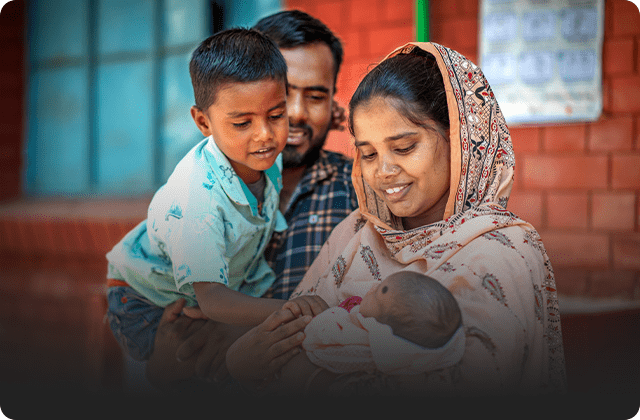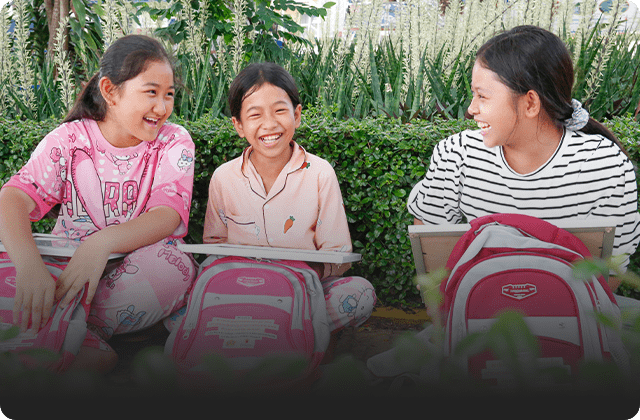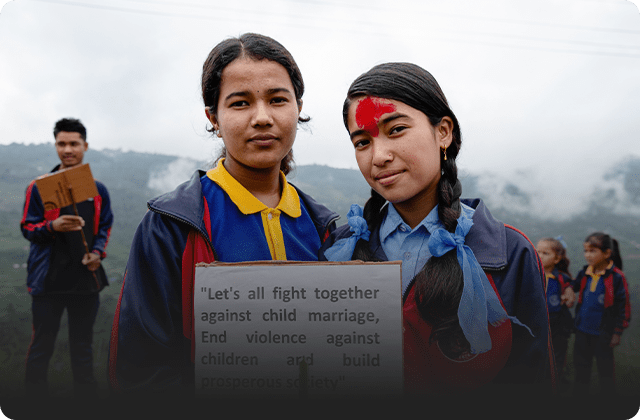해외사업
세이브더칠드런은 아동의 건강, 교육, 보호 분야의 글로벌 리더로서,
100여개가 넘는 국가에서 일하고 있습니다.
사망하는 5세 미만 아동
preventable and treatable causes.
Children across more than 100 countries, ensuring they
파리협정 10주년을 앞두고, 세이브더칠드런과 브뤼셀 자유대학교(Vrije Univesiteit Brussel, VUB)가 발표한 연구에 따르면, 현재의 기후 공약 하에서는 지구 평균기온이 산업화 이전 대비 2.7°C 상승할 가능성이 높으며, 이 경우 2020년에 태어난 약 1억 2천만 명의 아동 중 약 1억 명, 즉 83%가 전례 없는 폭염에 평생 노출될 것으로 나타났습니다.
그러나 만약 세계가 파리협정의 목표인 1.5°C 상승 제한을 달성할 경우, 극심한 폭염에 영향을 받는 5세 아동의 수는 6,200만 명으로 감소하며, 3,800만 명의 차이가 발생하게 됩니다.
이는 화석연료의 사용 및 보조금 중단을 신속히 추진하여 아동을 보호하는 것이 시급함을 보여주고 있습니다.
극심한 폭염은 아동에게 치명적이며, 신체적·정신적 건강에 심각한 영향을 주고, 식량과 깨끗한 식수에 대한 접근을 방해하며, 학교 폐쇄로 이어지기도 합니다.
해당 연구는 보고서 “기후위기에 태어나다 2: 전례 없는 삶 – 변화하는 기후 속에서 아동의 권리를 보호하기”에 실렸으며, 2020년에 태어난 아동이 홍수, 열대성 사이클론, 가뭄, 산불 등 다양한 기후재해로부터 받는 피해 역시 1.5°C 목표 달성 시 대폭 줄어든다고 분석했습니다.
BRUSSELS, 7 May 2025 – Almost a third of today’s five-year-olds – about 38 million children – will be spared a lifetime’s “unprecedented” exposure to extreme heat [1] if the world meets the 1.5°C warming target by 2100, Save the Children said.
Ahead of the 10th anniversary of the Paris Agreement, research released by Save the Children and Vrije Universiteit Brussel (VUB) found that under current climate commitments – which will likely see a global temperature rise of 2.7°C above pre-industrial levels – about 100 million of the estimated 120 million children born in 2020, or 83%, will face “unprecedented” lifetime exposure to extreme heat.
However, if the world limits warming to the 1.5°C Paris Agreement target [2], this would reduce the number of five-year-olds impacted to 62 million – a difference of 38 million – highlighting the urgency to protect children through rapidly phasing out the use and subsidy of fossil fuels.
Dangerous heat is deadly for children, taking an immense toll on their physical and mental health, disrupting access to food and clean water and forcing schools to close.
Researchers defined an “unprecedented” life as an exposure to climate extremes that someone would have less than a 1 in 10,000 chance of experiencing during their life in a world without human-induced climate change.
The research, published in the report Born into the Climate Crisis 2. An Unprecedented Life: Protecting Children's Rights in a Changing Climate [3] also found that meeting the 1.5°C target would protect millions of children born in 2020 from the severest impacts of other climate related disasters such as crop failures, floods, tropical cyclones, droughts and wildfires.
The report found that, for children born in 2020, if global temperature rise is limited to 1.5°C rather than reaching 2.7°C above pre-industrial levels:
• About 38 million would be spared from facing unprecedented lifetime exposure to heatwaves;
o About 8 million would avoid unprecedented lifetime exposure to crop failures;
o About 5 million would be spared from unprecedented lifetime exposure to river floods;
o About 5 million would avoid unprecedented lifetime exposure to tropical cyclones;
o About 2 million would avoid unprecedented lifetime exposure to droughts;
o About 1.5 million children would be spared unprecedented lifetime exposure to wildfires.
Climate extremes – which are becoming more frequent and severe due to climate change – are increasingly harming children, forcing them from their homes, putting food out of reach, damaging schools and increasing risks like child marriage as they are forced out of education and into poverty and food shortages.
As well as comparing conditions under 1.5°C and 2.7°C scenarios, the report also examines a scenario in which global temperatures rise to 3.5°C by 2100, which will lead to about 92% of children born in 2020 – about 111 million children [4] – living with unprecedented heatwave exposure over their lifetime.
While we need a rapid phase-out of the use and subsidy of fossil fuels to stick to the 1.5°C target, we must not lose sight of solutions, Save the Children said. The report highlights initiatives like increased climate finance, child-centred and locally led adaptation and increasing the participation of children in shaping climate action.
Summary of Save the Children’s recommendations:
Leaders must:
o Take ambitious and urgent action now to limit warming to a maximum of 1.5°C above pre-industrial levels, including by rapidly and equitably phasing out the use, subsidising and financing of fossil fuels, with high-income and historically high-emitting countries leading the way.
o Urgently close the adaptation gap and provide loss and damage funding through the provision of new and additional climate finance, prioritising children and child-critical social services, with a particular focus on reaching children most at risk. Climate finance should be delivered primarily in the form of grants, particularly for adaptation and loss and damage.
o Children, their rights, voices and unique needs and vulnerabilities must be centred in international climate plans and agreements, including the upcoming submission of new Nationally Determined Contributions (NDC 3.0), as well as building and investing in the climate resilience of child-critical services such as health and nutrition, water, sanitation and hygiene (WASH), education, child protection, and social protection.
4월 24일~30일은 세계 예방 접종 주간은 유엔이 예방 접종의 중요성을 알리기 위해 정한 기념 주간이다. 1974년부터 전 세계 영유아를 대상으로 예방 접종을 확대하는 프로그램을 진행해왔고, 이에 따라 영아 사망률이 약 40% 감소한 것으로 나타났다. 하지만 2023년 기준 1천 450만 명의 영유아가 필수 예방접종을 받지 못한 채 질병 위험에 노출되어 있다. 이는 보건 시스템이 부족하거나 예방접종에 대한 인식이 낮은 국가에서 주로 발생하고 있다.
최근 필리핀 전역에서 홍역, 백일해, 소아마비 등 백신으로 예방할 수 있는 감염병에 걸리는 영유아가 늘고 있다. 수도 마닐라에서 약 190km 떨어진 퀘손 주 일부 자치구에서는 영유아 필수 예방 접종률이 60% 이하로 떨어져 집단면역 형성에 어려움을 겪고 있다.
퀘손 주의 원주민 공동체에 사는 레베카(가명, 36세)씨는 “보건소에 가려면 8시간 이상 숲길을 걸어야 하고, 비용도 부담돼 아이들의 예방 접종을 맞히지 못했다.”라며, “평소 사용하던 전통 요법으로는 홍역과 독감 같은 감염병을 막을 수 없다.”고 어려움을 전했다.
세이브더칠드런은 이러한 문제를 해결하기 위해 2024년부터 2027년까지 3년간 퀘손 주 내 4개 자치구를 대상으로 영유아 필수 예방 접종률 향상과 감염병 감시체계 강화를 위한 보건 사업을 펼치고 있다. 총 15억 원 규모로 진행되는 이 사업은 지역 주민들의 예방 접종 인식을 개선하고 지역 정부의 감염병 대응 능력을 강화하는 것을 목표로 한다. 사업이 시작된 이후, 보건 인력 57명이 필리핀 정부의 감염병 통합 감시 매뉴얼에 따라 교육을 받았다.
이를 통해 영유아 감염병을 예방하고 조기에 대응할 수 있는 역량을 키웠다. 또한 간호사, 조산사 등 영유아와 자주 접촉하는 보건 인력 14명을 트레이너로 양성해 주민 대상 인식개선 교육이 꾸준히 이어질 수 있도록 했다.
더불어 세이브더칠드런은 퀘손 주 보건국과 협력해 84개 마을에서 감염병 감시 체계를 새로 만들었다. 이 시스템은 마을 주민이 직접 감시팀에 참여해 감염병 발생 시 신속히 당국에 알리고 대응할 수 있게 돕는다. 앞으로는 필리핀 역학감시국, 조산사협회 퀘손 지부, 필리핀 예방 접종 재단 등 과 함께 정책 개선을 위한 논의도 진행할 예정이다.
퀘손 주에서 보건인력으로 일하고 있는 알마(47세, 가명) 씨는 “예방 접종에 익숙하지 않은 부모를 설득해야 하는 경우가 많다. 이번 교육을 통해 실제로 도움이 되는 지식을 배웠다.”고 말했다.
한편, 세이브더칠드런은 전 세계 아동의 건강을 지키기 위해 다양한 질병 예방 및 치료 활동을 이어가고 있다. 2024년 기준 52억 원 규모의 보건 사업을 통해 개발도상국의 보건시스템을 강화했다. 현재까지 필리핀, 에티오피아, 모잠비크에서 세계백신면역연합 등과 협력해 영유아 예방 접종률 향상에 기여하고, 아동과 가족을 위한 공공 의료 서비스 제공에 주력하고 있다.
지난 3월 28일, 미얀마에서 발생한 규모 7.7의 강진으로 현재까지 약 3,600명의 사망이 확인되었습니다.
이와 더불어, 지진 피해 지역의 아동들은 깨끗한 식수 부족과 최근 내린 폭우로 인해 설사, 콜레라 등 수인성 질병에 심각하게 노출되어 더 큰 피해가 예상되고 있습니다.
피해 지역 대부분은 주요 수원이 오염되었으며, 주민들은 강이나 저수지 같은 지표수에 의존하고 있습니다. 특히 가장 큰 피해를 본 일부 지역은 수도관이 파괴되었거나, 강이 멀리 떨어져 있어 물을 구하기 어려운 상황입니다.
많은 아동과 가족이 임시 대피소에서 지내고 있으며, 최근 며칠간 내린 폭우로 곳곳에 고인 물웅덩이가 생겨 수인성 질병뿐만 아니라 모기를 매개로 전염되는 질병의 위험도 커지고 있습니다.

YANGON, 7 April 2025: Children in earthquake affected areas in Myanmar are at heightened risk of contracting waterborne diseases, such as diarrhoea and cholera, after heavy rains in recent days as well as water shortages, Save the Children warned.
Save the Children and its partners are seeing the needs of children firsthand in communities with limited access to clean water in the aftermath of the devastating 7.7 magnitude earthquake on 28 March.
In some areas, access to safe water has been severely disrupted with some primary water sources now contaminated and people forced to rely on spring or surface water. In the hardest hit areas, damaged pipelines have also cut access to spring water and rivers are far away. The lack of electricity in some areas has made it impossible to pump water.
Many families are living in makeshift shelters outside the ruins of their homes which give little protection from unseasonable storms of recent days. The rains are also exacerbating the risk of water and mosquito-borne diseases with pools of dirty, stagnant water. More rain is forecast for this week in areas where thousands of people are sleeping in the open [1].
Families are telling Save the Children that food and drinking water are their urgent priorities, but that they also need repairs to toilets and washing facilities which are crucial to limiting the spread of water and mosquito borne disease such as cholera and dengue and skin infections.
Myanmar has seen outbreaks of diseases such as acute watery diarrhoea and cholera before, and current emergency water supplies to affected areas are only a short-term solution. In the longer term, communities need sustainable and reliable sources of water.
Thein Htike*, 20, was in a small boat on a lake when the quake struck, throwing him and his friends overboard. While he was swimming to shore, he saw wooden houses in his village collapsing. His family were safe, but many people died or were injured, and nearly every family in his village lost their belongings.
Thein Htike* said:
“Our drinking water storage tank had collapsed, and we were left without safe water to drink. Donations didn’t arrive for two days. Until then, we had to filter the muddy water [from the lake] which used to be clean. Either way, we had no choice but to drink what we had, safe or not.
“After the quake, dead snails began floating on the surface [of the lake]. Some people said it was because of oxygen loss in the water, killing the aquatic life, but I’m not sure if that’s true.
“After two days, we got some clean drinking water, but once those supplies run out, we will face a serious crisis. Without long-term support, the lack of clean water may lead to long-term health problems in the village.”
Last year, Thein Htike*’s village was hit by devasting floods, and they were only beginning to recover when the earthquake hit. Conflict and climate fueled disasters have left 6.3 million children among the 19.9 million people — or more than one third of the population — already in need of humanitarian support in Myanmar before the earthquake [2].
More than 17 million people across 57 townships of Myanmar’s 330 townships have been affected by the earthquake, according to the UN, with at least 3,500 people killed and nearly 5,000 injured [3]. The Department of Disaster Management and AHA Centre said about 69,000 people have been displaced by the earthquake [4].
Save the Children is responding in the earthquake affected areas alongside local partners to ensure children’s immediate needs are met, including food, water, shelter, personal hygiene kits and emergency health care services.
Jeremy Stoner, Interim Asia Regional Director, Save the Children said:
“The situation right now is desperate for children and their families. After being forced to flee from their ruined homes, they are now facing unseasonably early rains on top of the brutal heat. With clean water in short supply, it’s difficult for people to maintain proper hygiene – and that can lead to disease outbreaks.
“We’re concerned that we could start seeing a growing number of children getting sick with illnesses like diarrhoea, as is often the case in the aftermath of crises like this where the scale of damage is so high.”
Save the Children has been working in Myanmar since 1995, providing life-saving healthcare, food and nutrition, education and child protection programmes.
Notes to Editors
*denotes name changed to protect identity
3월 22일과 3월 23일은 각각 세계 물의 날과 세계 기상의 날이다.
세이브더칠드런에서는 방글라데시와 인도네시아에서 진행한 주민 주도형 기후위기 대응 사업을 진행하고 있다.
방글라데시 남부 쿨나 주의 사트키라 지역은 기후변화의 영향을 가장 많이 받는 해안가 지역이다. 이 지역은 염수 침입으로 인해 농업용수 확보가 어렵고 식량 안보에도 큰 영향을 받고 있다. 특히 건기에는 갠지스강의 유속이 느려져 지표수와 지하수가 오염돼 주민들이 깨끗한 물을 구하기 어려운 상황이다.
인도네시아 서부 자바 지역은 최근 해수면 상승, 폭염 및 강수량 증가 등 극단적 기후 현상이 늘어나는 등 자연재해에 취약한 지역이다. 이 지역 전체 인구의 7.8%인 390만 명이 빈곤 상태에 있으며, 대부분 농업 등 천연자원에 의존해 생계를 유지하고 있어 기후변화에 특히 취약하다. 또한, 전체 학교의 75%가 재해 발생 지역에 있으나 오직 25% 미만의 학교에서만 기후 위험에 대비하고 있어 학생들이 위험에 노출되고 있다. 이에 따라 학교 기반 시설 개선과 재난 대비 교육이 시급했다.
세이브더칠드런 코리아는 이런 상황을 개선하기 위해 두 국가에서 지역 주민들의 기후 변화에 적응을 돕기 위한 사업을 추진해 왔다. 특히, 지역사회의 아동과 주민들이 직접 참여하고 주도하는 방식으로 사업을 진행해 지속가능성을 높이는 데 중점을 뒀다.
방글라데시에서는 물관리 위원회를 조성하고 지역사회 주민에게 물 공급시설 관리와 수자원 보호에 대한 훈련을 제공했다. 이를 통해 지역 주민들이 직접 마을 내 지하수 우물 500개소를 점검하고 식수 안전 등급을 평가하는 시스템을 구축했다. 이를 통해 주민들이 오염된 우물과 안전한 식수를 쉽게 확인할 수 있게 됐다.
여성 이용자 그룹에 참여해 직접 수질 검사를 진행한 미노티 씨는 “교육을 통해 안전한 식수의 중요성을 배웠다. 식수 안전 등급을 색깔로 표시하면서 우리의 아이들을 비소 노출에서 보호할 수 있었다.”고 경험을 전했다.
인도네시아에서는 10개 학교에서 아동·청소년의 주도로 교내 재난 방재 계획을 수립하고, 대피 경로 보수, 대피 훈련 시뮬레이션 등 학교에서 재난이 발생할 경우 대피하는 절차를 마련했다. 또한, 천리안 인공위성을 활용한 기상 관측 시스템을 기반으로 조기에 재난 경보를 알리는 애플리케이션을 개발했다. 우선적으로 지역 주민 중심으로 조성된 조기경보팀이 기상 정보를 모니터링하고 전파해 재난에 대비하고, 향후 애플리케이션을 활용한 재난 경보 시스템을 운영할 계획이다.

<인도네시아 초등학교 학생들이 직접 만든 재난 대피 계획>
세이브더칠드런 인도적지원·기후위기대응센터 장설아 센터장은 “기후변화로 급격한 환경의 변화를 겪는 지역사회일수록 주민들의 자발적인 참여를 통해 적응력과 회복력을 키울 수 있다”고 말했다. 그는 또한 “한국이 가진 선진적인 기술을 적용해 인프라를 구축하는 한편, 기후 환경에 적응해야 하는 주민들의 역량을 키움으로써 지속 가능한 기후위기 대응이 가능할 것”으로 전망했다.
매년 3월 8일은 ‘세계 여성의 날’로, 여성의 사회적, 경제적, 문화적, 정치적 업적을 기념하고 여권 신장을 촉구하기 위해 제정된 국제 기념일이다.
세이브더칠드런은 부르키나파소에서 여성 및 청소년의 자립을 지원하는 인도적지원을 진행하고 있다.
부르키나파소는 여성의 권리와 평등 면에서 세계 하위권에 속한다. 유엔의 인간개발보고서에 따르면, 이 나라의 젠더 불평등 지수는 166개국 중 146위로 매우 낮다. 2024년 발간된 글로벌 성 격차(Gender Gap) 보고서에서는 보건 및 교육 분야에 대한 여아와 여성의 접근이 146개국 중 120위로, 여아가 학교에 다니지 못하는 경우가 많고, 고등교육을 받는 비율도 낮다.
2018년 이후 부르키나파소 사헬 및 노르 지역에서는 분쟁과 기후변화로 인해 많은 사람들이 집을 떠나야 했다. 2023년 3월 기준으로 210만 명이 넘는 사람들이 국내에서 피난 생활을 하고 있으며, 58%가 여성이다. 이들은 이주 과정에서 폭력에 노출될 위험이 크며, 새로운 곳에 정착한 후에도 빈곤, 불평등, 사회적 배제 등으로 생활하기가 매우 어렵다.
분쟁으로 집을 떠나 부르키나파소 와히구야 지역에 정착한 사미라(15세, 가명)는 청소년 자립 기술 훈련을 통해 재봉 기술을 배우고 있다. “집에서 학비를 댈 수 없어 학교에 다니지 못했어요. 예전에는 음식을 파는 노점상에서 일한 적도 있는데, 지금은 재봉 기술을 배워 제대로 된 제 가게를 차리고 싶어요.”라며 포부를 밝혔다.
세이브더칠드런 코리아는 이런 상황을 개선하기 위해 한국국제협력단의 국제기구 협력사업의 일환으로 유엔인구기금과 파트너십을 맺었다. 2023년부터 3년간 사헬 및 노르 지역에서 여성과 아동을 폭력으로부터 보호하고 경제적 역량 및 자립 능력을 강화하는데 중점을 두고 있다.
이번 사업을 통해 세이브더칠드런은 분쟁과 기후변화로 강제 이주한 여성과 청소년의 자립 역량을 강화했다. 450명의 청소년에게 자립 기술 교육을 했으며, 300명에게는 목공, 재봉, 미용 등 지역사회에서 수요가 높은 직업 훈련을 제공해 실제로 일할 수 있는 기술을 가르쳤다. 아울러 성폭력 예방 교육을 통해 여성의 권리에 대한 인식을 높였다.
세이브더칠드런 인도적지원·기후위기대응센터 장설아 센터장은 “부르키나파소의 전통적인 사회 통념 속에서 여성에게 주어진 기회는 제한적이다. 특히, 분쟁과 기후위기로 인해 불평등이 심화되면서 사회적 배제가 더욱 굳어지고 있다”며, “여성과 청소년의 교육 기회를 늘리고 기술을 배울 수 있게 도와 사회에 진출하도록 지원하면, 더 포용적인 사회를 만드는 데 도움이 될 것"이라고 말했다.
▷ 전 세계 재난 속 아동을 돕기 위한 '세이브원(Save One)' 캠페인













